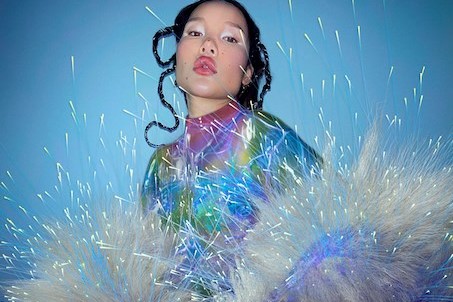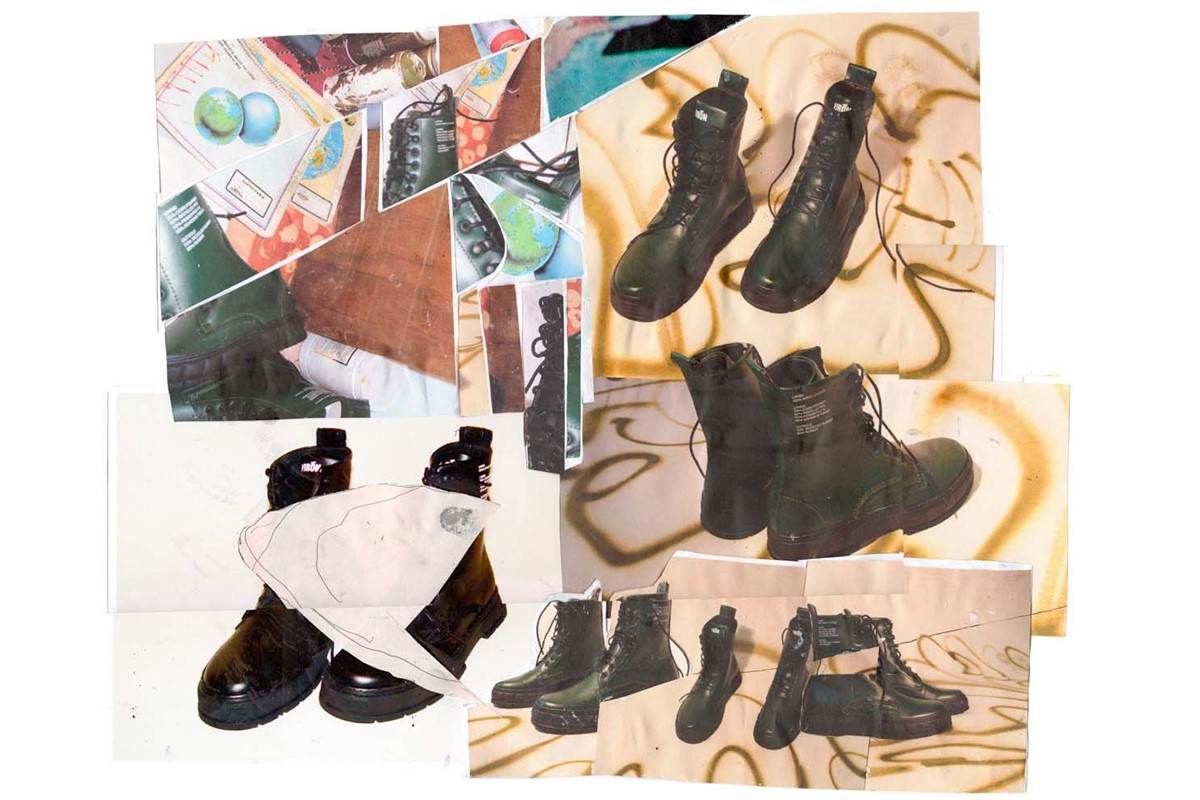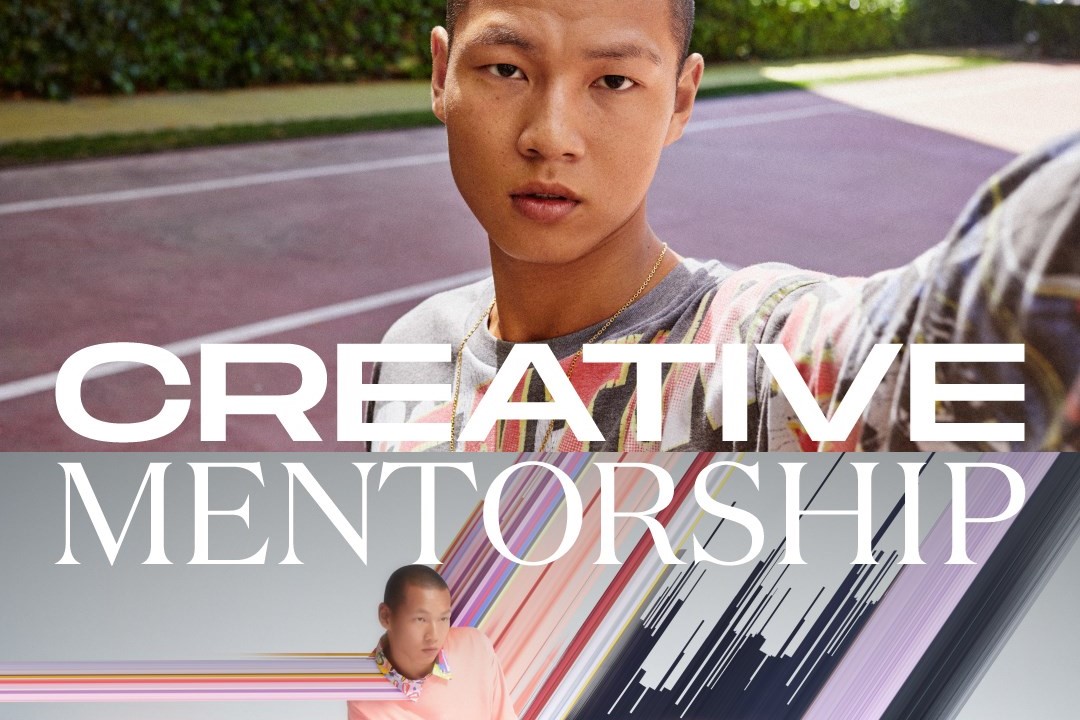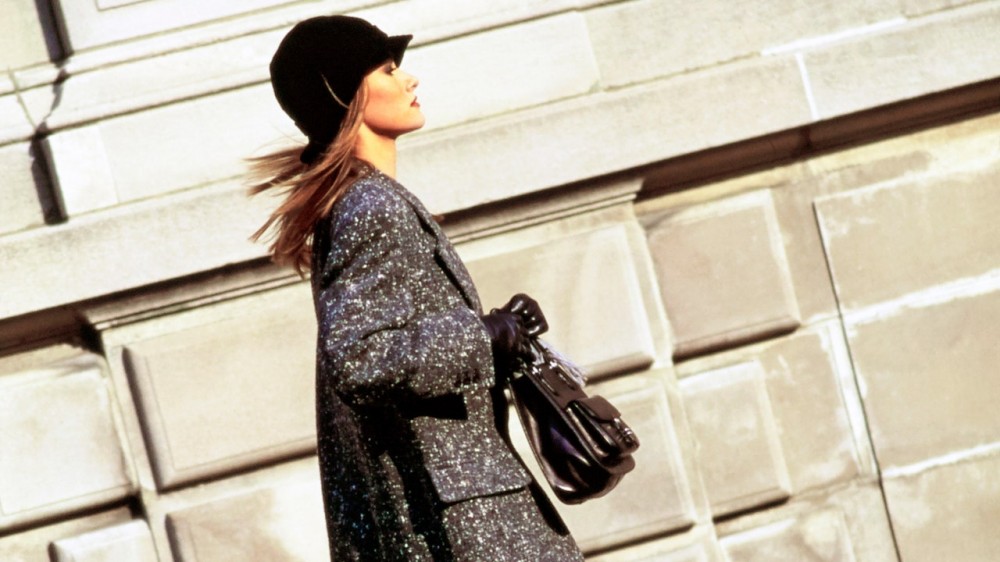
AUROBOROS’ is the tech fashion house creating celestial cyber couture
Using VR technology and 3D scanning, the London based label is blazing a trail for digital fashion
In 2020, fashion entered a state of flux. With the coronavirus shifting the industry further into the digital realm than ever before, brands are currently recalibrating for the new age we find ourselves living in: with some finding it easier than others. Step forward AUROBOROS. The London-based, science-meets-tech-meets-fashion house was founded by creative directors Paula Sello and Alissa Aulbekova last year, and takes its name from an ancient symbol depicting a snake eating its own tail (representative of eternal change).
Inspired by the concept of biomimicry – which, in case you’re not familiar, is a system centred around imitating nature’s structures in design – Sello started to create one-off haute couture garments that would grow on the body in real-time through the process of crystallisation. Aulbekova began to replicate these ever-changing structures in the digital sphere, using the 3D scanning and AR techniques to curate the ‘AUROBOROS world’ – an immersive universe celebrating their love for ‘nature tech’.
The brand’s digital designs are inspired by plant structures, human anatomy, and supernatural entities from sci-fi films like Avatar or Annihilation: tops embellished with tendrils, suits decorated with elements of the lymphatic system, or coats built out of seedlings that have a life of their own. Made to measure and applied over photographs sent by clients, garments not only fit all body shapes and sizes, but are also completely waste-free thanks to their cyber nature. Alongside initiatives like the Institute of Digital Fashion, the label is exploring a new way forward for the industry.
“AUROBOROS’ digital designs are inspired by plant structures, human anatomy, and supernatural entities from sci-films like Avatar or Annihilation: tops embellished with tendrils, suits decorated with elements of the lymphatic system, or coats built out of seedlings that have a life of their own”
With Sello and Aulbekova’s collaboration starting off as an experimental side project during uni, things started to take off when Lee Alexander McQueen’s Sarabande Foundation chose AUROBOROS as one of the emerging artists to support in 2020 – providing them with a studio space and guidance on how to launch their house. Last month, the brand debuted its digital ready-to-wear collection and announced its partnership with a shoppable styling game DREST – AUROBOROS became the first digital label on the app to be showcased amongst luxury heavyweights, such as Gucci or Prada. For those lacking the budget to indulge in some cyber couture, the app offers intrigued fashion fans the opportunity to try it out for themselves.
Ahead of the release of AUROBOROS’ first collection, we spoke to the founders of the brand about their beginnings in fashion, creating an immersive experience, and why digital design is an answer to the sustainability and body inclusivity concerns permeating the industry as it currently stands. Scroll to the end to find a gallery in which both designers discuss the collection’s finer detais.
How did you meet and what drew you to working together?
Paula Sello: We met in a club actually (laughs), in Corsica Studios in London. Initially, I think we were just drawn to each other’s aesthetics, but after we started talking, we realised that we just had so many similar interests – we were both really attracted to working on something that isn’t a cyclical repetition of the past, but is focused on the future that’s hopeful and beautiful. And we both thought that exploring science and technology can really represent this change in a fashion context. Another similarity was that we were both pretty much self-taught and experimental in our practices. I didn’t study a fashion design degree, but rather graduated with a BA in media and sociology at Goldsmiths.
Alissa Aulbekova: For me, although I finished a BA Fashion Communication degree at Central Saint Martins, I was very much learning the technology on my own along the way, because there’s no course that really teaches you digital image creation. And I think that because both of us were just completely neglecting the ‘borders’ and ‘guidelines’ of fashion, we had such a freedom in our minds to build this whole world of AUROBOROS.
What did these early experimentations look like?
Paula Sello: During my time at university, I would create these one-off couture pieces on the side and do some crazy things to them, including setting them on fire (laughs). Since I didn’t study design, I didn’t really understand the parameters of what was right and wrong – I was pretty much just throwing anything on the body and exploring the way that the materials would transform over a period of time.
“I remember being really amazed by what Alissa was doing. The first scan that we did together was of a pearl bracelet that I made – Alissa edited it in a way where it looked like the pearls were floating around the model” – Paula Sello
Alissa Aulbekova: Throughout my course, I would experiment with painting, photography, video, and animation, and just kept constantly looking for something exciting and new to learn. Then, I came across 3D scanning and I thought, ‘Wow, nobody is really doing it in fashion and it’s such a huge asset to use.’ And when we began working together, we started to scan the designs into the digital sphere.
Paula Sello: I remember being really amazed by what Alissa was doing. The first scan that we did together was of a pearl bracelet that I made – Alissa edited it in a way where it looked like the pearls were floating around the model. Also, because we didn’t really understand the process yet, during the scanning, there was a technical glitch that ended up making the visual even more beautiful in the end. That was definitely the moment where we realised we found a medium that will allow us to be very playful with our imagery.
A pivotal moment in your development was becoming a part of Lee Alexander McQueen’s Sarabande Foundation. How do you think the organisation helped you grow as a brand?
Paula Sello: It was just such a nurturing environment, thanks to the three strong women who were leading it: Trino Verkade, Mae Sass, and Martha Mosse. Not only did they present us with a studio space, but were also very understanding of the slow pace that we needed to build the brand – because in our case, everything from clothing to Zoom backgrounds has required a lot of meticulous and detailed work. They also really pushed our vision in terms of branding – they came up with a term that I believe is a great description of what we are doing, ‘nature tech’.
What’s at the core of ‘nature tech’?
Alissa Aulbekova: It’s about getting in touch and getting to know nature through technology. We use technology as a tool, a helping hand in what we do, rather than a distraction or an abstraction. We’re so inspired by nature because it is known to be the best designer. And since our physical pieces literally grow on the body in real-time, through a process of crystalisation where the garment mimics the process of ‘blossoming’ in the span of six to twelve hours, ‘nature tech’ also comes from this ability to use technology and science to adapt like nature.
Paula Sello: I think it’s also about fusing our love of nature with technology. It’s very much a sustainability-conscious proposition – if you think about it, a lot of people buy clothes to only wear them once for social media. So why not buy a digital garment that is 10 times more exciting and engaging, rather than an unsustainably-made sweater from a fast-fashion brand? Our philosophy is to use the advances of technology to help protect and cherish the nature around us.
What’s the emotion that you want to evoke with this digital collection and the immersive world that is accompanying it?
Paula Sello: It’s a romantic take on our natural environment. We wanted to propose this grand vision, inspired by some of our favourite movies like Annihilation, Ex Machina, or Avatar, and create this ephemeral feeling that you get when you watch a sci-fi film or play a game like Cyberpunk 2077. Our goal is to build an emotional and reactive experience.
“We wanted to propose this grand vision, inspired by some of our favourite movies like Annihilation, Ex Machina, or Avatar, and create this ephemeral feeling that you get when you watch a sci-fi film or play a game like Cyberpunk 2077. Our goal is to build an emotional and reactive experience” – Paula Sello
From a practical point of view, what does the process of ordering the digital garments look like?
Alissa Aulbekova: It’s very simple. You buy a garment that you want on our website and send us a clear photo of yourself in good lighting. Then, we apply the garment onto your body and send it over. Although we call it digital ready-to-wear, the clothes really are made-to-measure – we manipulate the clothing precisely to the client’s body size. That’s why we are able to accommodate all body shapes and sizes.
You describe AUROBOROS as a collective. How big is the team that works on developing your vision?
Alissa Aulbekova: With every project and idea we have, we build a team from scratch. We have worked with sculptors, digital 3D pattern-cutters, and VFX artists, and every single of these amazing people has brought so much expertise to each piece we have done. So we’re encouraging people from all walks of life to work with us…
Paula Sello: We like to nurture in a way as well. We find a lot of people who haven’t been recognised yet and are from outside of the peripheral of ‘traditional’ fashion, and bring them in to create this whole world. In order to create this multi-layered vision, you need to have so many different viewpoints and different skill sets. I think a lot of people tend to neglect how much craft goes into making digital artwork. So every time you see something on our social media, we credit all of our collaborators. We want them to be seen as part of this larger community that we’re establishing.
What have been some of the biggest challenges of starting a brand in 2020?
Paula Sello: There’s definitely been a lot of day-to-day struggles in terms of not being able to get to our workplace, but I have to say that it’s also been a blessing in a sense. The industry has taken a step back and started thinking about changing the system. People realised that we can’t keep going the way we used to – it was like a messy rat race where no one was creating designs that were creative and thoughtful, it was just, ‘next collection, next collection, next collection.’ So I think everyone became more conscious and started to think about the outcome of the things they were producing.
Alissa Aubelkova: Yeah, I think that because of lockdown, people also finally started to pay attention to the digital concepts that we were implementing since the beginning of our practice. They realised that it’s one of the great solutions to break the damaging cycle of fashion.
Find AUROBOROS on DREST here.



